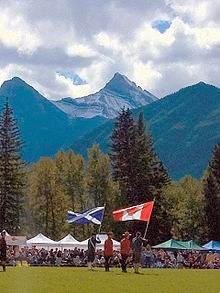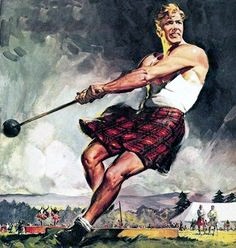History of the Highland Games

All around the world people participate or are spectators at Scottish Highland Games. Seen as a way of celebrating Scottish and Celtic culture it is one of Scotland’s biggest cultural exports. Features of the Games include competitions in piping and drumming, dancing, heavy athletics, as well all kinds entertainment and exhibits related to many aspects of Scottish and Gaelic culture.

The first historical reference to the type of events held at Highland Games in Scotland was made during the time of King Malcolm III (Scottish Gaelic: Máel Coluim; c. 1031 – 13 November 1093) when he summoned men to race up Craig Choinnich overlooking Braemar with the aim of finding the fastest runner in Scotland to be his royal messenger. They were also thought to have originally been events where the strongest and bravest soldiers in Scotland would be tested. These gatherings were not only about trials of strength. Musicians and dancers were encouraged to reveal their skill and talents and so be a great credit to the clan that they represented.

There are about 100 Highland Games in Scotland every year.
The Ceres Games in Fife, which began in 1314, are thought to be the oldest, continuous Highland Games in Scotland. They proudly state that the Ceres Highland Games are ‘held in honour of the brave men of Ceres who fought at Bannockburn.’ The Battle of Bannockburn (Scottish Gaelic: Blàr Allt nam Bànag) on 24 June 1314 was a major Scottish victory against the English in the First War of Scottish Independence.
The Cowal Highland Gathering, held in Dunoon (Scottish Gaelic: Dùn Omhain), Scotland, annually in August, is the largest Highland games in the world. The Braemar Gathering is often thought to be the best known games and traces its origins in the games held by King Malcolm III. These events in Scotland are mirrored around the world with remarkably well attended gatherings in the United States, for example Grandfather Mountain Highland Games in North Carolina and the Caledonian Club of San Francisco event at Pleasanton, California.
The history of the Highland Games has not always been a smooth one. The development of this showcase of Highland culture was severely disrupted following Scottish defeat at the Battle of Culloden (Scottish Gaelic: Blàr Chùil Lodair). The 1746 Proscription Acts were passed in a deliberate attempt by the British to dismantle Scottish Highland life, culture, society and destroy the clan system. These laws were finally repealed on 1 July 1782. The Highland Games really only started to develop again after the 18th and 19th Highland Clearances, a brutal process of evictions that attacked the Gaelic culture of the Highlands.

Scottish traditions and culture were spread as people from Scotland moved around the world. Caledonian Societies were formed in Canada, New Zealand, the United States, Australia and wherever around the globe Scots met and reunited. The first form of Highland Games in the United States took place in 1836 and was organised by the Highland Society of New York. Followed a few years later by the Caledonian Club of San Francisco. Now there are Highland Games held in many places throughout the world. Traditionally some events have become standard in these games such as the caber toss, stone put, Scottish hammer throw, weight throw, weight over the bar, sheaf toss and maide leisg (lazy stick). However, these gathering now have a whole variety of events, stalls, entertainments, pipes, dancing and all kinds of competitions.
This great Scottish cultural export is set to continue to grow. Both in the Scottish homeland and all around the world where people want to celebrate their Scottish heritage.
- Scottish
- English
- Log in to post comments





